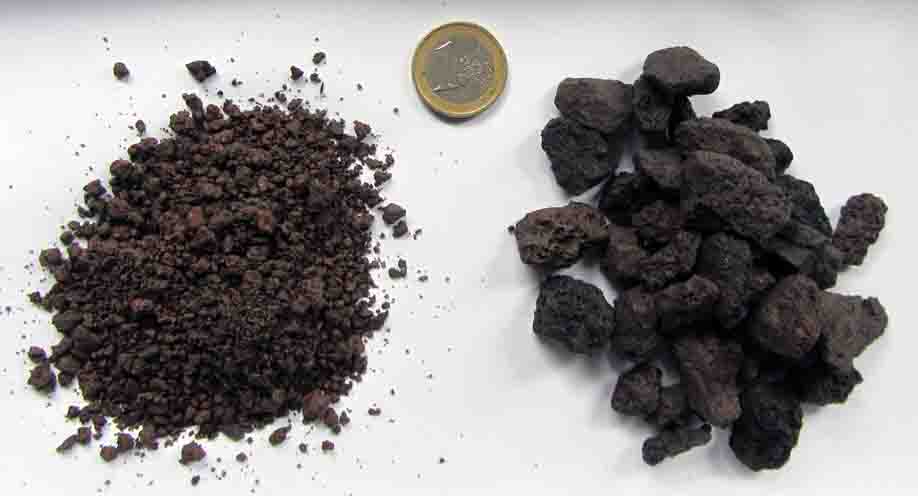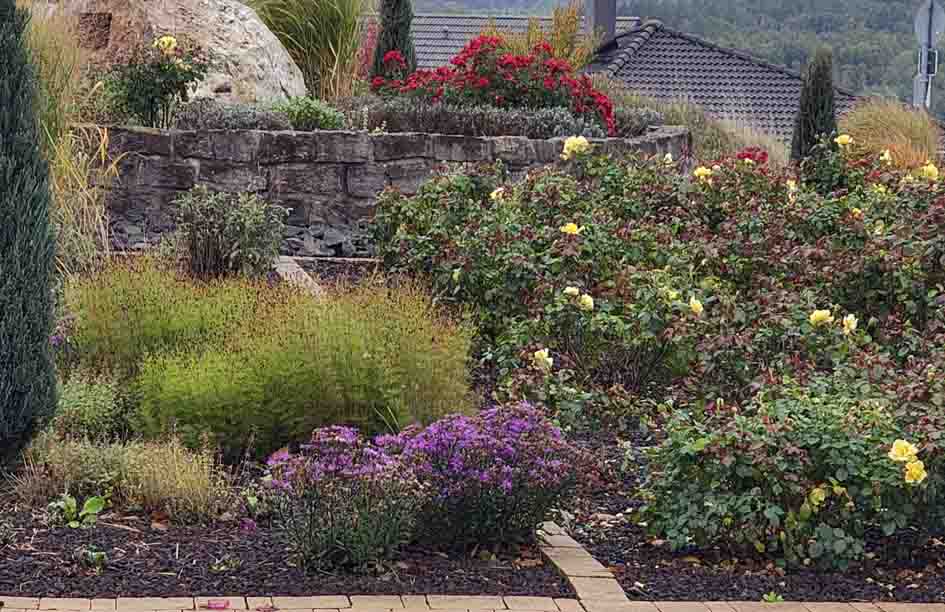Lava granulate is ground stone made from volcanic lava. In Germany, it mainly comes from the Eifel region. It is a natural material that is simply ground and possibly washed. No additional energy-intensive treatments are required. Lava has a porosity of over 50%, making it lightweight and usually reddish-brown in color. Its porosity gives it the unique ability to retain moisture within the granules. Therefore, fine lava granulate (grain size up to 3mm) is particularly suitable as an additive to potting soil. In the bonsai field, it has been successfully used for over 30 years. It is also effective for emaciate purchased (often over-fertilized) potting soil. Additionally, its sharp edges help inhibit the development of fungus gnat larvae in flower pots. Coarse lava granulate (grain size 2-8 mm) is ideal as a mulch material on the surface, for example, on tree discs.
Both are similar in that they undergo slow weathering, making them a source of minerals for the soil. Their porous, open structure promotes the colonization of suitable soil bacteria.
Lava granulate, expanded clay

Fine and coarse lava granulate
